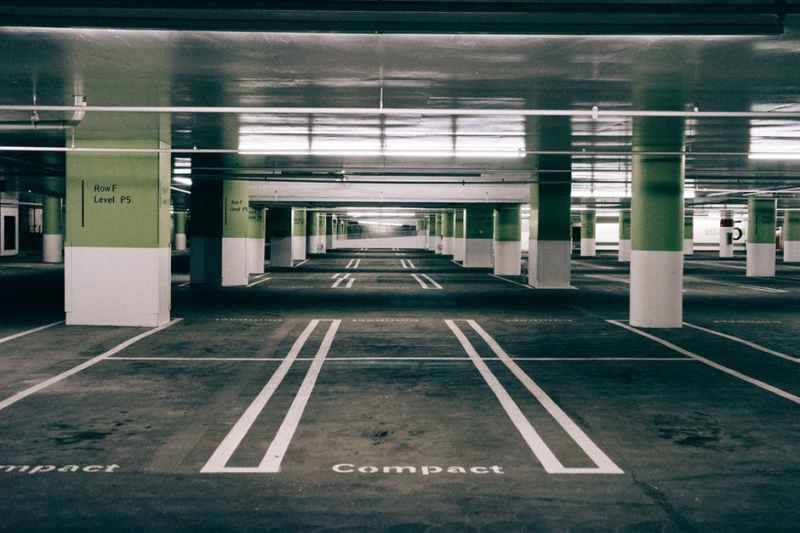A state audit of four campuses of the California State University system [PDF]--Fullerton, Channel Islands, Sacramento State, and San Diego State--slammed the CSU Chancellor's office on two issues. The Chancellor, it says, hid over $1.5 billion from unspent tuition revenue it accumulated over a period of time marked by a doubling in tuition costs for students.
In addition to that, the auditor charged that the four campuses built expensive new parking facilities that had little effect on campus parking capacity but committed them to "significant long-term debt payments." The report slams the Chancellor's office for not enforcing systemwide policies that require each campus to investigate alternative transportation options before investing in more parking.
The parking costs were passed on to students. Because of labor agreements, faculty and staff did not see the same increases in parking fees, so students have borne the brunt of the higher costs and lack of alternatives to driving.
From fiscal years 2008 through 2018, says the report, "the four campuses we visited raised student parking permit prices to as high as $236 per semester, largely to pay for the millions of dollars in annual debt payments they took on to finance the construction of new parking facilities." For example, "the Channel Islands campus increased parking prices by 34 percent, while parking capacity actually decreased by 21 percent because enrollment outpaced the growth in parking supply."
Even worse:
Under a 2015 bond, San Diego State took on nearly $900,000 in annual debt payments to finance a 300‑space parking facility in a housing and retail development. This facility did not increase the campus’s student parking capacity because it is intended to primarily serve retail customers, as well as some campus visitors. Although students who purchase semester parking permits are not eligible to park within the new facility, the campus is using those students’ parking permit fees to finance it.
CSU campuses are required to develop transportation demand management plans to comply with state environmental law that covers building projects--including building on campuses to accommodate increased enrollment. Those plans should include an overview of parking and transportation conditions and a discussion of strategies to reduce parking demand, such as on-campus housing and adjusting parking pricing or creating other programs to influence driving behavior.
The report found that in 2017-18, between forty and seventy percent of total enrolled students on the four campuses bought semester or residential parking permits, ranging from $168 to $236 per semester. Even when they can pay those fees, students who buy the permits are not necessarily guaranteed a space to park. The audit not only found poor parking availability at peak times, it found that the high occupancy rates affected students' behavior:
According to Fullerton’s 2015 parking demand study, finding parking in parking structures is extremely competitive, so students tend to arrive early to secure parking regardless of when their classes begin. Students then remain parked throughout the day, limiting vehicle turnover. As a result, Fullerton’s parking spaces do not serve as many students as they could. Fullerton’s January, 2019, parking demand study asserts that the trend of full parking facilities has continued and, in fact, worsened.
The flip side of this hardship for students who are willing to and can drive to campus is that the thirty to sixty percent of students who are not buying parking permits are on their own to find a way to campus. The campuses neglected to even consider strategies that could reduce parking demand by offering alternative transportation choices.
For example, Fullerton's 2003 master plan
only briefly mentions that the campus should encourage the use of public transportation. In fact, until 2015, Fullerton’s key planning documents contained little mention of strategies for implementing alternate transportation. Although Fullerton performed a parking demand study in 2015 that recommended several alternate transportation strategies, such as establishing a transit center, campus shuttles, and a bike share program, it did not implement many of these strategies. Yet, Fullerton plans to build another parking facility in 2020...that will result in significant price increases for students.
The report recommends that the campuses investigate alternative transportation strategies, including transit, shuttles, carpooling, and bike-share, and that the Chancellor's office "immediately require that when campuses request to build new parking facilities, they must submit information on whether implementing alternate transportation strategies reduced parking demand and their plans for future strategies."
It also recommends that the California legislature require better planning and reporting from the CSU Chancellor. For example, it should require the campuses to compare the costs of providing parking to alternative strategies, as well as compare the number of students that would be served by parking to the number that would benefit from alternatives. The legislature should also require them to provide better information about whether the new parking structures are justified.






